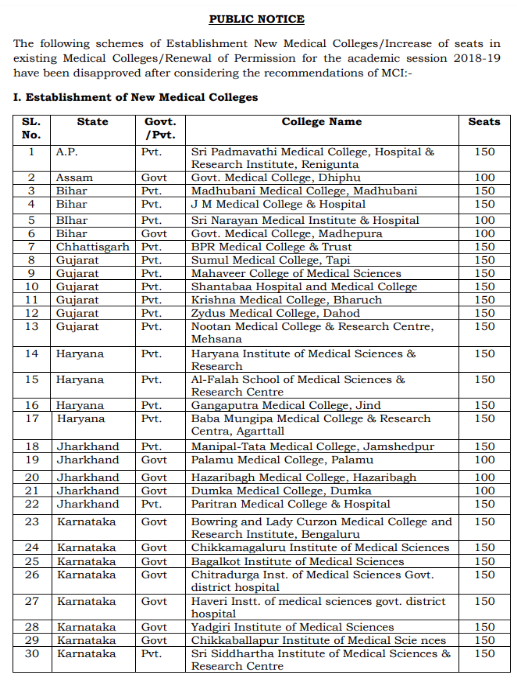Amidst high tensions among MBBS aspirants over admissions into medical colleges, the Medial Council of India (MCI) has banned 82 medical colleges — 70 private and 12 state-run from accepting new students for the academic year 2018-19, thereby blocking more than 10,000 out of the estimated 64,000 MBBS seats available nationwide.

Reportedly, the ministry in a notice has also rejected proposals to approve 68 new medical colleges from accepting students or increase their student intake, including four in Bihar and two in Bengal and six in Karnataka. This would have added a total of 9,000 more MBBS seats for this academic session.
The Reasons Behind The Ban
Out of these 68 medical colleges, 31 are government while 37 are privately run. Additionally, nine medical colleges were denied from expanding their student intake capacity by at least 50 seats each.
In another announcement, the ministry either barred medical colleges from introducing super specialty courses or expand their student intake capacity.
The decision which was announced on May 31, 2018, came after the Medical Council of India, the top-most governing body for medical education in India cited deficiencies and highlighted how the scarcity of resources have been posing serious challenges for India’s ambition of expanding medical education in the nation.
A member of MIC’s academic committee, while talking to The Telegraph said, “People want to create things (medical colleges) without realising what the colleges require.”
Earlier this year during the 2018 Union Budget announcement, health minister JP Nadda had announced plans to upgrade and add to the health infrastructure. This includes 15 new super specialty facilities at 15 government colleges and 58 new medical colleges attached with district hospitals.
Panic Among Students
The cut-offs for this year’s NEET exam results which were announced on Monday was even lowered from last year’s. The cut-off for the unreserved category is down from 131 out of 720 marks last year to 119 this year, while that of the reserved categories has dropped from 107 to 96.

This translates into the fact that over 7 lakh students from the 13 lakh who appeared are eligible for admissions in medical colleges. With the banning of roughly 15,000 seats this year, MBBS aspirants may be panic-stricken when it comes to getting college admissions.
With a dismal doctor to patient ratio of seven doctors per 10,000 people, India is still has a long way to go before it can achieve the World Health Organisation (WHO) prescribed doctor to patient ratio of 1:1000.
 Indilens Web News Live Daily News on India ! Insights of India
Indilens Web News Live Daily News on India ! Insights of India


